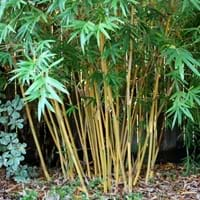Life Span
Perennial
Perennial
Type
Broadleaf Evergreen
Grass
Types
Bigleaf hydrangea, Hortensia, Smooth hydrangea, Oakleaf hydrangea, Annabelle
Not Available
Number of Varieties
Not Available
Habitat
Forest edges, Hillside, Woods
Dry Forest, hedge rows, open Woodlands, Shady Edge
USDA Hardiness Zone
6-10
8-15
AHS Heat Zone
Not Available
12 - 1
Sunset Zone
21,22
Not Available
Habit
Oval/Rounded
Clump-Forming
Minimum Width
Not Available
Flower Color
Purple
Not Available
Flower Color Modifier
Bicolor
Bicolor
Fruit Color
Red
Not Available
Leaf Color in Spring
Dark Green
Light Green, Dark Green
Leaf Color in Summer
Dark Green
Light Green
Leaf Color in Fall
Dark Green
Light Green, Dark Green
Leaf Color in Winter
Dark Green
Light Green, Dark Green
Leaf Shape
Oblovate
digitate
Plant Season
Spring, Summer, Fall, Winter
Spring, Summer, Fall, Winter
Sunlight
Partial Sun, Partial shade, Full Shade
Full Sun, Partial Sun, Partial shade
Type of Soil
Loam
Loam, Sand
The pH of Soil
Acidic, Neutral
Acidic, Neutral, Alkaline
Soil Drainage
Well drained
Average
Bloom Time
Spring
Not Available
Tolerances
Pollution, Drought, Salt
Drought
Where to Plant?
Container, Ground
Container, Ground
How to Plant?
Seedlings, Stem Planting
Budding, From Rhizomes, Seedlings
Plant Maintenance
Medium
Medium
Watering Requirements
Not Available
Average Water Needs
In Summer
Average Water
Lots of watering
In Spring
Moderate
Moderate
In Winter
Average Water
Average Water
Soil pH
Acidic, Neutral
Acidic, Neutral, Alkaline
Soil Type
Loam
Loam, Sand
Soil Drainage Capacity
Well drained
Average
Sun Exposure
Partial Sun, Partial shade, Full Shade
Full Sun, Partial Sun, Partial shade
Pruning
Remove damaged leaves, Remove dead branches, Remove dead leaves
No need to prune
Fertilizers
All-Purpose Liquid Fertilizer
All-Purpose Liquid Fertilizer
Pests and Diseases
Red blotch
Red blotch
Plant Tolerance
Pollution, Drought, Salt
Cold climate, Drought, Heat Tolerance, Wet Site
Flowers
Insignificant
None
Flower Petal Number
Single
Single
Foliage Texture
Medium
Medium
Foliage Sheen
Glossy
Matte
Attracts
Bees, Flies
Butterflies
Allergy
Chest tightness, Diarrhea, Dizziness, Nausea, Vomiting
Not Available
Aesthetic Uses
Not Available
Showy Purposes
Beauty Benefits
Not Available
No Beauty Benefits
Edible Uses
Not Available
Yes
Environmental Uses
Air purification
Air purification, Food for insects, Wildlife
Medicinal Uses
Fever, Kidney problems, Urinary tract problems
Not Available
Part of Plant Used
Flowers, Root
Stem, Tree trunks
Other Uses
Not Available
Economic Purpose, Traditional medicine, Used As Food, Used for woodware, Used in Furniture, Used in paper industry
Used As Indoor Plant
Not Available
No
Used As Outdoor Plant
Yes
Yes
Garden Design
Container, Feature Plant, Foundation, Hedges, Houseplant, Mixed Border, Topiary, Bonsai, Espalier
Container, Feature Plant, Hedges, Screening / Wind Break, Tropical
Botanical Name
AUCUBA japonica f. longifolia 'Salicifolia'
BAMBUSA multiplex
Common Name
Japanese Aucuba, Japanese Laurel, Willowleaf Japanese Laurel
Clumping Bamboo, Hedge Bamboo
In Hindi
Hydrangea
हेगड़े बांस
In German
Hortensie
Hedge Bambus
In French
Hortensia
Bamboo Hedge
In Spanish
Hortensia
bambú de cobertura
In Greek
υδραγεία
hedge Μπαμπού
In Portuguese
Hortênsia
Bamboo Hedge
In Polish
Hortensja
Żywopłoty Bamboo
In Latin
Hibiscus
Sepi Bamboo
Phylum
Not Available
Magnoliophyta
Class
Not Available
Liliopsida
Order
Not Available
Cyperales
Genus
Not Available
Bambusa
Clade
Not Available
Angiosperms, Commelinids, Monocots
Tribe
Not Available
Bambuseae
Subfamily
Not Available
Bambusoideae
Number of Species
Not Available
Not Available
Importance of Japanese Aucuba and Hedge Bamboo
Want to have the most appropriate plant for your garden? You might want to know the importance of Japanese Aucuba and Hedge Bamboo. Basically, these two plants vary in many aspects. Compare Japanese Aucuba and Hedge Bamboo as they differ in many characteristics such as their life, care, benefits, facts, etc. Every gardener must at least have the slightest clue about the plants he wants to plant in his garden. Compare their benefits, which differ in many ways like facts and uses. The medicinal use of Japanese Aucuba is Fever, Kidney problems and Urinary tract problems whereas of Hedge Bamboo is Not Available. Japanese Aucuba has beauty benefits as follows: Not Available while Hedge Bamboo has beauty benefits as follows: Not Available.
Compare Facts of Japanese Aucuba vs Hedge Bamboo
How to choose the best garden plant for your garden depending upon its facts? Here garden plant comparison will help you to solve this query. Compare the facts of Japanese Aucuba vs Hedge Bamboo and know which one to choose. As garden plants have benefits and other uses, allergy is also a major drawback of plants for some people. Allergic reactions of Japanese Aucuba are Chest tightness, Diarrhea, Dizziness, Nausea and Vomiting whereas of Hedge Bamboo have Not Available respectively. Having a fruit bearing plant in your garden can be a plus point of your garden. Japanese Aucuba has showy fruits and Hedge Bamboo has no showy fruits. Also Japanese Aucuba is not flowering and Hedge Bamboo is not flowering . You can compare Japanese Aucuba and Hedge Bamboo facts and facts of other plants too.

